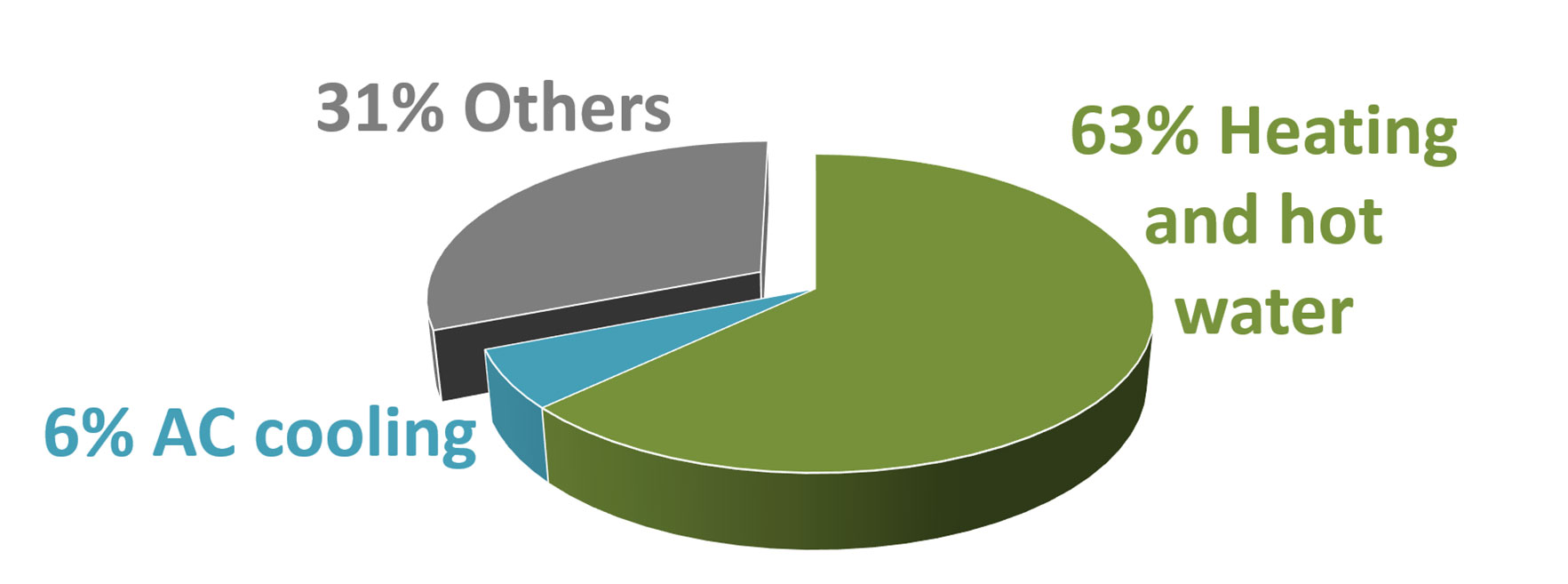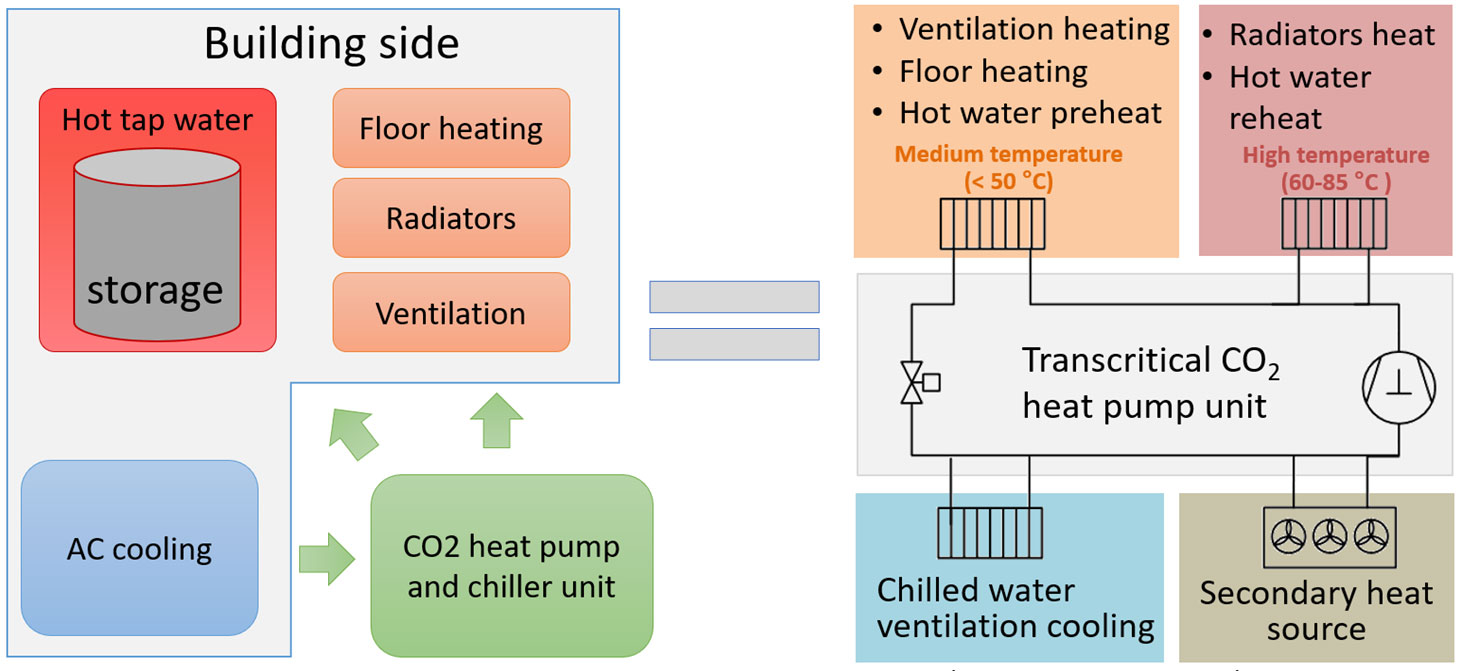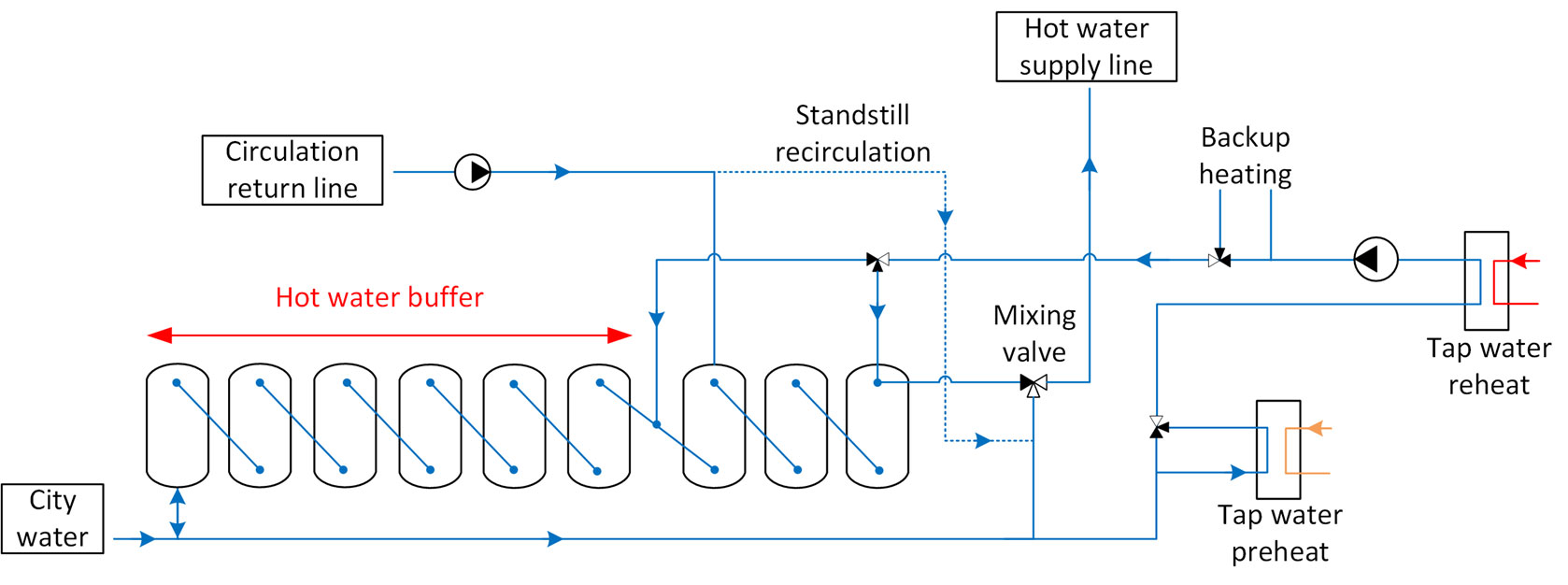The first “all-in-one” CO2 heat pump was installed in a Norwegian hotel in 2018. A 63% reduction in the use of electricity for heating and cooling was achieved in its first two years of operation. For an average hotel, this represents a 44% reduction in total electricity usage.

The potential benefits of applying “all-in-one” systems are immense, as they also offer a considerable reduction in greenhouse gas emissions.
There are over 150,000 hotels across Europe today – and the number of new hotels is increasing with 4000-5000 each year. More than 3.6 TWh energy could be saved each year if only 10 % of these hotels were to adopt the “all-in-one” CO2 heat pump solution. Put in perspective; this is enough energy to cover the electricity consumption and related emissions of 230,000 Norwegian households each year, which is just short of half a million people.
But what should these systems look like and what is important to remember when designing the “all-in-one” system?
There are still some challenges in relation to these questions but that the potential of this technology is evident even at the current status.
We see that guests are more aware of hotel branding and their attitude towards environmental challenges. If a new technology is to be successful in the hotel sector, it needs to reduce both operational costs and the environmental impact. The “All-in-one” CO2 heat pump definitely fills these shoes and is a viable alternative for the future.
The complex energy requirements of hotels
Hotels are complex buildings with large needs for hot water, heating and cooling. Normally, about 60 to 70 % of the hotel’s electricity consumption is used to cover these needs. Different parts of a hotel will often have different temperature requirements at the same time. For instance, in places where people gather such as conference rooms and restaurants, there will be a need for ventilation cooling. Meanwhile, areas such as spa centers require heating to keep the temperature high and comfortable

Today’s standard to meet all these different requirements for simultaneous heating and cooling is to have many separate systems that provide their function separately. Typically, electric boilers or district heating stations are installed to cover the heat load – with lower than 1-to-1 efficiency, while separate refrigeration units provide cooling when needed. Why not combine all thermal systems in the hotel to a single system that can provide heating and cooling with high efficiency?
Combining heating and cooling = High efficiency
Heat pumps work by upgrading heat from a low to a high-temperature level. The heat output from the heat pump is typically 3-4 times larger than the electricity input, making the process highly efficient. With combined “all-in-one” heat pump and chiller systems, all heating and cooling needs are provided by the same system. Heat is then removed from where cooling is needed – is upgraded and recovered at a high-temperature level. This way heat can be recovered from ventilation cooling and be used for space heating and hot water production.

Combined heat pump systems that utilise CO2 as a working fluid in the processes are able to cover a wide temperature span within the same cycle, typically from -30 to 90 °C. Contrary to many other heat pump solutions, CO2 as a natural refrigerant in refrigeration systems is often a recovered byproduct from other industrial processes. Hence, one can argue the global warming potential (GWP) of CO2 as a natural refrigerant to be zero as it does not add any new CO2 to the atmosphere.
CO2 heat pump cycles can operate in the trans critical region, in contrast to many other heat pumps. This means that heat is rejected at gliding temperatures, which is perfect for hotels due to the many temperature requirements and large hot water consumption. Hence, the “all-in-one” CO2 heat pump is able to cover the hotel’s thermal needs in an efficient, sustainable and environmentally friendly way.
Why hot water storage in hotels is a good idea
Thermal energy storage is regarded as the “next big thing” within energy efficiency because the storage can shift demands to another time and by that reducing peak loads. For hotels, this is especially relevant due to the large amounts of hot water that is used, which is typically 40 to 70 % of the hotel’s total energy usage.

As in their own homes, most guests prefer to shower at specific times, usually in the morning and evenings. The hot water consumption in hotels follow a specified schedule with large activities from 6 to 8 a.m. and from 7 to 9 p.m. at night. By installing a large hot water storage, one can charge the storage during off-peak hours and provide a “buffer” to cover all the demand during peak hours. This way, the hotel can avoid the peak power tariffs and reduce the operational costs of their thermal systems. In addition, hot water storage reduces the size and cost of equipment, increases operational stability and ensures the supply of hot water.
By Silje Marie Smitt, PhD-candidate at NTNU working with HighEFF and “all-in-one” CO2 heat pump systems for hotels.









Comments
All the best information is on the thermal solutions for heating and cooling in hotels in detail. Such articles are not only knowledge enhancers but also very interesting to read and to learn to compare from. I would suggest everyone to come over this link and read it.
Potential savings by implementing “all-in-one” CO2 systems in 10 % of European hotels. Typical end-use electricity consumption in European hotels. Example of an “all-in-one” CO2 heat pump solution. Hot water storage in a hotel.
Great Article. Great Numbers. Considering South America as a Tropical Country, where the ambient temperatures are much higher and then the Cooling Load is higher, would that have a negative Impact on the System performance configuration?
Thank you for the feedback!
Installing CO2 in hotels in warm climates is something we are working on – and it is very interesting. The real challenge is, as you say, that the cooling load is larger. Hence, you need to satisfy dominant heating AND cooling demands, which may not occur at the same time. Thermal storage on both hot and cold side should therefore be installed to shift demands. For cold storage, this could be chilled water tanks or phase change materials with a higher freezing point than water. Another possibility that should be considered is using high-pressure ejectors to recover work from the low-pressure side of the system.
Implementing these type of systems is doable in warm climates – and the efficiency should be in the same range – if not higher do the large amount of cooling “recovered”. But as you see, there is need for careful designing, use of thermal storage and sufficient control structures to make the systems operate at optimal conditions.